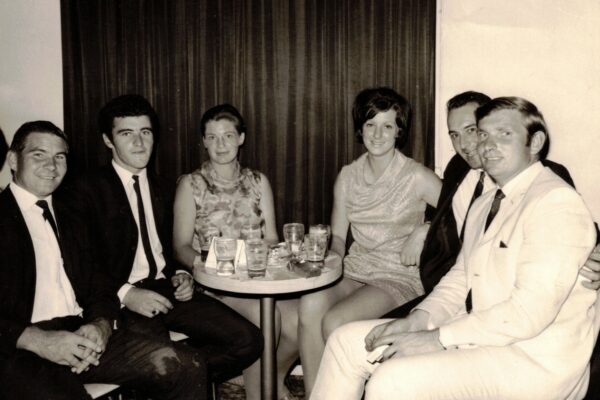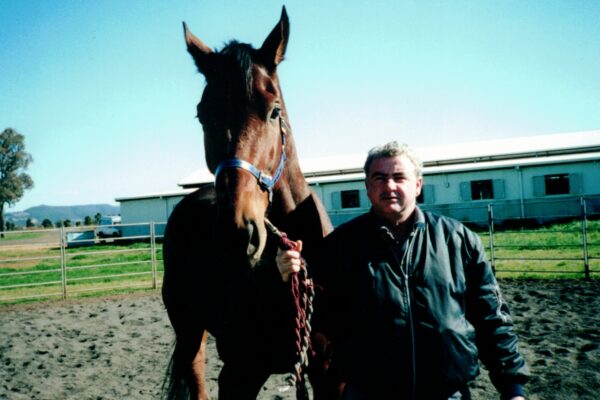Alan Brideoake: Lest we forget – portrait of a POW
Featured Image: Alan Brideoake at his home in Stafford Street
Alan Brideoake told me some fascinating tales of his encounters with elephants and their Thai handlers (‘Mahouts’) while incarcerated by the Japanese on the horrendous Thai/Burma railway construction. He actually gave me his copy of the book ‘Elephant Bill’ written by Lt Colonel Bill Williams of Burma which I treasure. I have written elsewhere about ‘Elephant Bill’s’ veterinarian son Dr Treve Williams who lived in Scone and later became chairman of the Australian Jockey Club.
One anecdote Alan told me was the violent death of a brutal Japanese overseer. Following some severe beatings an elephant picked him up by his trunk and smashed him against a tree. ‘Bad elephant’ Alan inquired of the Mahout? ‘No bad elephant’ replied the Mahout with a knowing look; ‘only bad man’!
https://www.sconeadvocate.com.au/story/1456992/lest-we-forget-portrait-of-a-pow/
Dale Hilly April 25 2013 – 12:28PM
There are stories from his time as a prisoner of war that Allan Brideoake will never tell.
“It would be too horrid,” Mr Brideoake said.
He was one of over 22,000 Australians who were POWs of the Japanese in south-east Asia during WWll. Over 8000 died in captivity.
He was also one of 9500 Australian POWs who worked on the construction of the Burma-Thailand Railway, where 2646 Australians died in captivity.
It is well documented that they lived in atrocious conditions, fed meagre rations and were forced to work 12 to 18 hours without stopping. Many died from diseases such as dysentery and cholera but also starvation and beatings.
For a long time Mr Brideoake never talked about his World War ll experiences at all.
“They told us ‘Get home, don’t talk about it, get back to work’,” he said.
His father was a WWI digger wounded in France and Somme where he was gassed and blinded in one eye. He knew terrible things happened in war.
Mr Brideoake was 26 on his first Anzac Day at Weethalle after he returned from Japan and he hasn’t missed one since. For a while he was involved in the RSL organising the ANZAC day ceremonies.
He married Ruth who had written to him while he was in the services, had children and then grandchildren.
He bred Kelpies for fifty years, was a keen fan of sheep dog trials and rodeo.
For four decades he went to the Sydney Anzac Day march to “catch up with mates”.
His wife, Ruth, who was a member of the Australian Army Medical Women’s Service would come along and sometimes march. After the service they would have lunch on a boat on the harbour with his POW mates.
Over the years the marching turned to riding in jeeps.
“We used to get together and have a good time,” he said of his fellow POWs.
“It is a special day – you think of your mates.”
Over the last decade he told his family about some of his war-time experiences and he has even addressed Scone school students.
He tells of being six foot and weighing less than eight stone, being crowded onto a boat to Japan and not showering for seventy days.
“I suppose we all smelt a bit,” he said with a laugh.
“I never said anything until about ten years ago, but I wouldn’t tell everything,” Mr Brideoake said. “People never understood the POWs – they will never understand.
“We were closer than brothers.
“We would get into gangs of about ten and look after each other.
“Malaria, cholera, tropical ulcers that lead to amputations…. When your friend needed help you hopped in because you knew your time would come.
“There would be an extra spoonful of rice from each of us – nine spoonfuls of rice doesn’t sound much but it was the difference of life and death for a sick man.”
For the last five years Mr Brideoake has taken part in Anzac Day events in Scone.
Today he will assemble with other veterans at 10.45am for the march. These days, at 93, he and some other veterans will be on gophers.
“Afterwards we’ll adjourn to the club where the RSL have lunch for us,” he said.
Mr Brideoake said Anzac Day had not changed much except for the greater presence of children.
“It’s good to see all the littlies,” he said.
If you see Mr Brideoake and his mates on their gophers today, give them a wave and a big cheer, for this is their day.
Portrait of a POW
Allan Brideoake enlisted aged 20 in 1940, a member of the 2/19th (Riverina) Battalion which he said suffered more casualties than any that left Australia in WWll.
In January 1941 he sailed on the Queen Mary 1 to Asia.
February 15, 1942 he was captured in the fall of Singapore fighting on the mainland of Malaya.
He was held in Changi and then worked on the Burma Thailand Railway for two years,
Shipped to Japan on the ship Byoke Maru and worked in coal mines three miles under the sea.
He was in a POW camp near the Japanese city of Nagasaki when two atomic bombs were dropped in 1945, ending the war.
After three and a half years as a prisoner of war he and his mates were released to return home. The plane wheel didn’t come down as they circled above Australia, he was put in quarantine and his medical records and pay books were misplaced.
He was glad to be home.



















